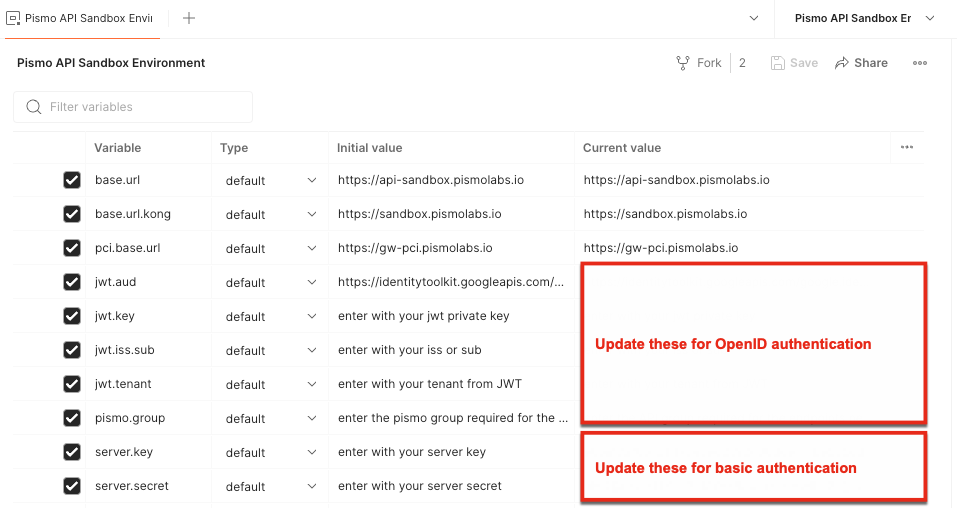Testing Pismo API endpoints with Postman
Postman is a recommended and widely-used API platform utility for building, using, and testing APIs. This guide assumes you have some familiarity using Postman.
To help you with testing, Pismo provides Postman collections and environments . A collection is a group of API requests that can be arranged in folders inside Postman and saved to a file for future use. Postman also enables you to create an environment for use with a collection. A collection that is loaded in Postman can read from and write to global environment variables. An environment can also be saved to a file for future use.
You can use our official Postman collections and environments to test and interact with Pismo REST APIs. You can test all these APIs via the Pismo developer portal, but Postman provides a way for you to customize and streamline your testing environment. Pismo has created a public workspace with some shared collections. These collections allow you to interact with and test Pismo APIs without needing to manually create the collections themselves.
Currently, the Pismo workspace has the following collections available:
- All public Pismo endpoints - This collection includes all the Pismo public APIs in a single collection.
- Pismo cards collection - This collection shows you the basic calls used in creating an account and a credit card.
Getting Started
Step 1 - Download and install Postman
Use either Postman on the Web or download the desktop version. Get a free or paid Postman account.
Step 2 - Fork Pismo collections and environments
The recommended way to work with a collection is to fork it. This is similar to forking in Github. This lets you maintain your own customized local version and still pull in Pismo’s changes to the collection over time. When using the Pismo collections, select the collection that matches your use case and create your own fork. The following links fork a collection and the Pismo sandbox environment, which is used for all collections.
When creating your fork, click on the Watch original collection box to enable Postman to send you emails when Pismo updates the collection so you can pull the changes into your fork and always stay up to date on the latest version of the collections.
For information on forking, see Fork collections, environments, and Flows in Postman.
IMPORTANT: Fork it in a PRIVATE workspace. Keep your credentials, tokens, and sensitive data private.
Step 3 - Update environment variables
Once you have forked the collection and environment that matches your use case, you can update the environment variables with your credentials. When using basic authentication, you can acquire these keys from the Pismo Control Center. For more information, see Manage access keys.
When using OpenID authentication, update the pismo.group variable in the sandbox environment based on the endpoints you are testing. For more information on how to authenticate with OpenID see Authenticate with OpenID.

For more information about Postman environment variables, see Edit and set environment variables in Postman.
Step 4 - Begin testing Pismo API endpoints
Most Pismo API endpoints require values that other endpoints return. Some Pismo collections are set up so that if you call the endpoints in a set order, the necessary values are automatically saved in the collection variables.
Note the endpoints start with {{base.url}}/. This means all endpoints are already configured to use the Sandbox environment variable stored as base.url in the Sandbox environment.
Updated 5 months ago